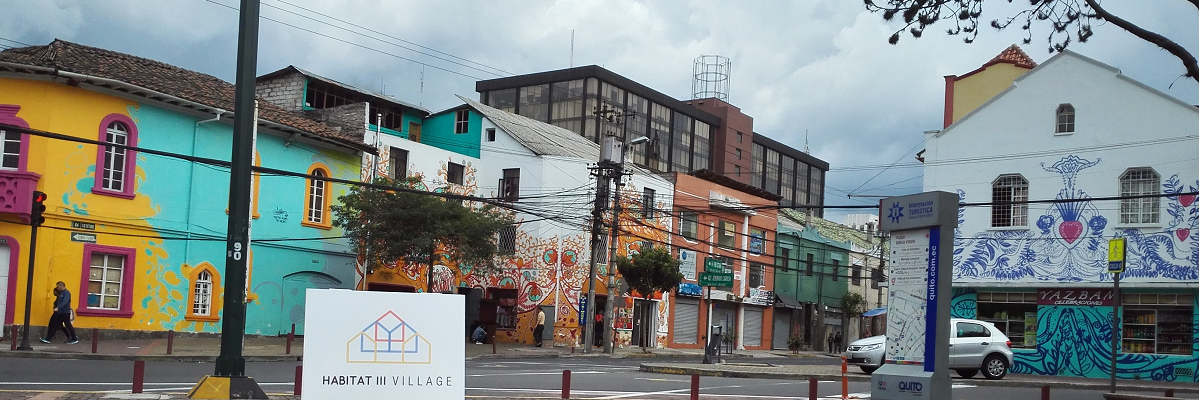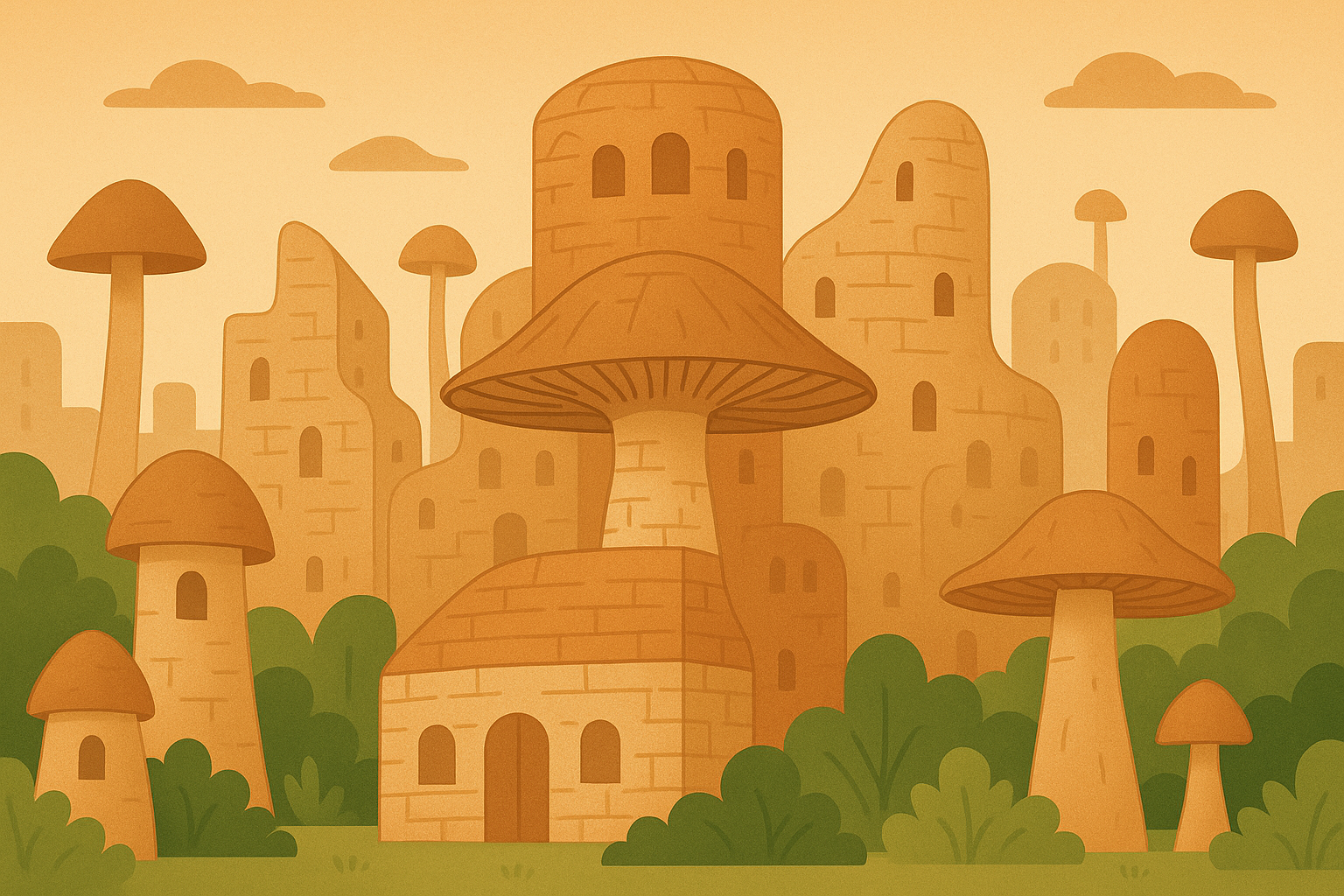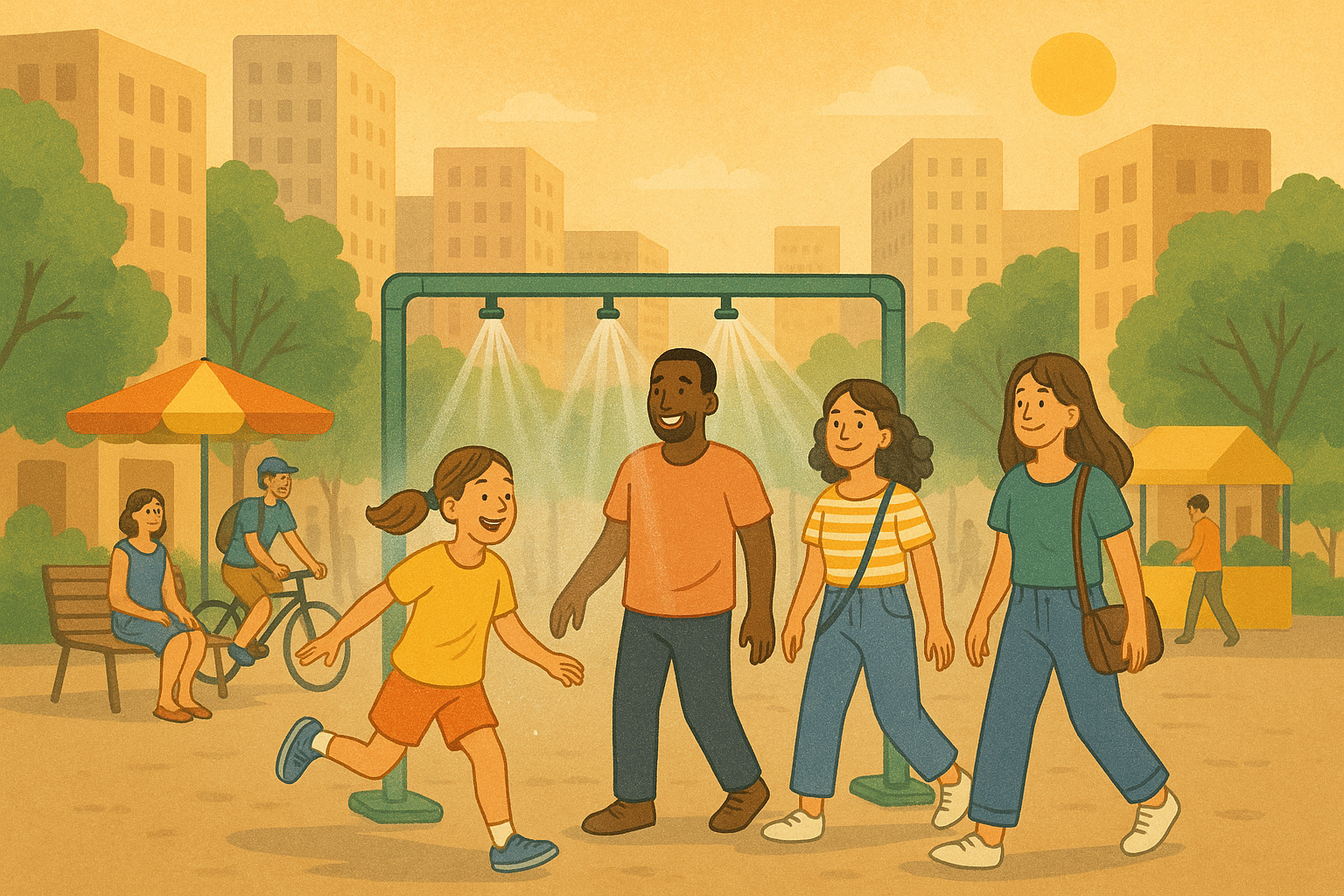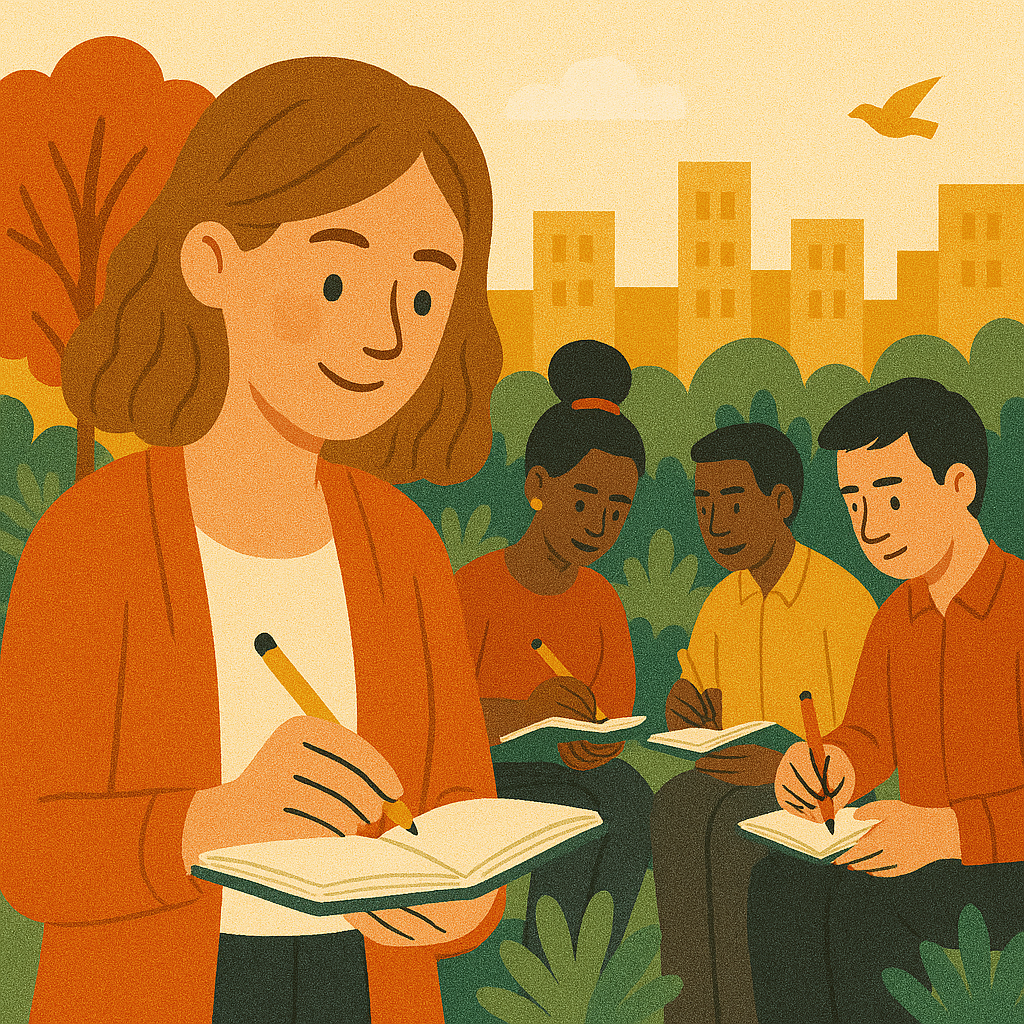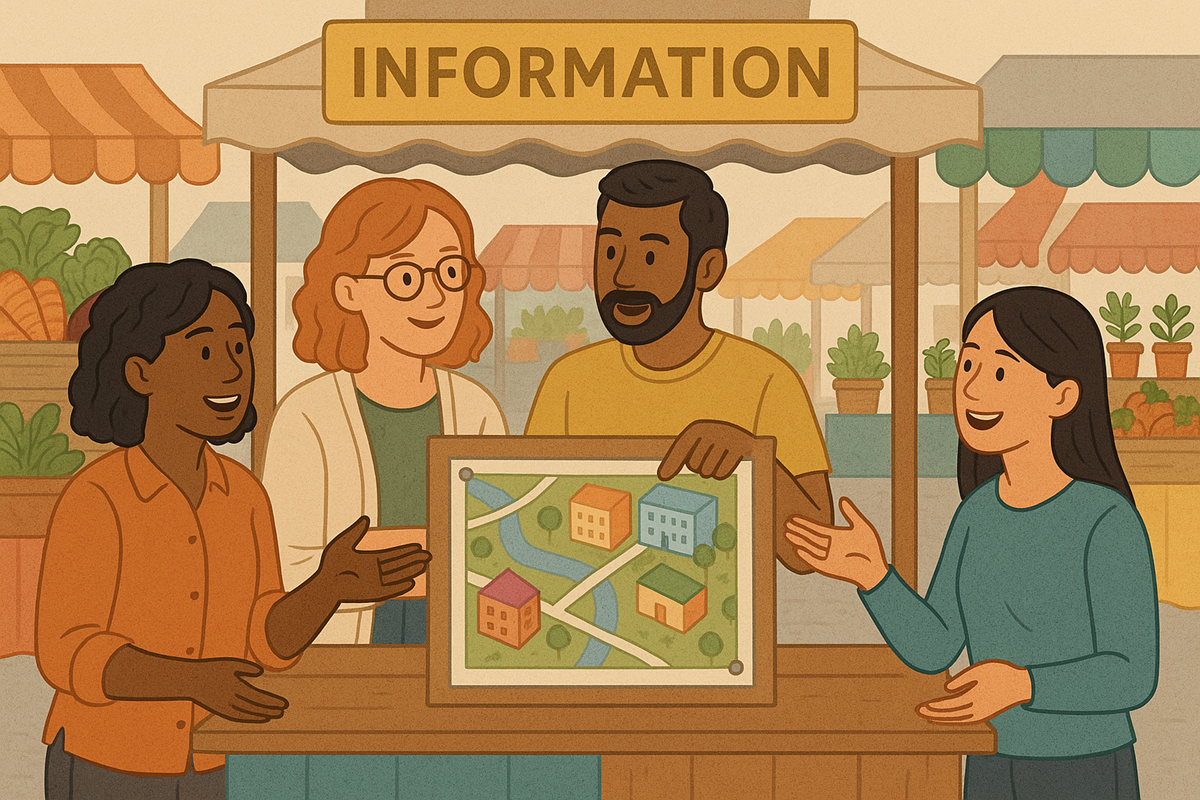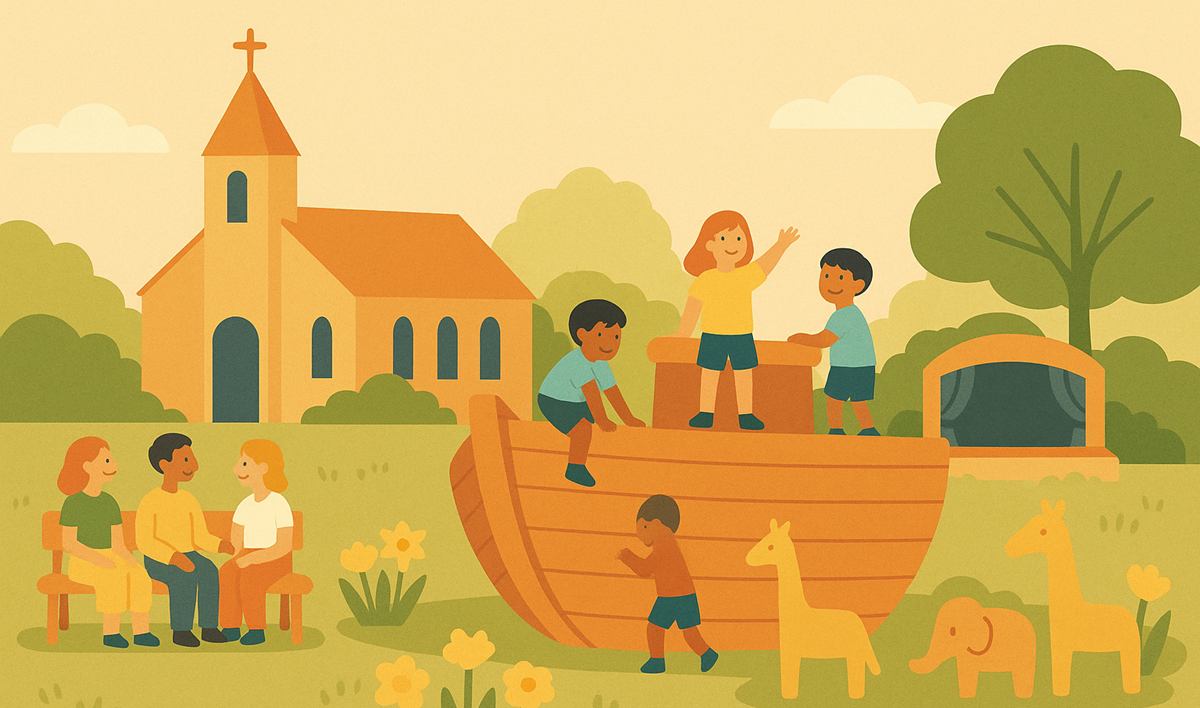How to revive an urban neighbourhood that has become nothing more than a place to work?
La Mariscal is one of Quito’s more affluent districts with a lot of international hotels, offices, and restaurants. However, as soon as business hours are over, the district is as good as dead and the public spaces are not safe any more. Once constructed as a garden city, some of the beautiful old villas are still there, while in between many new high rise buildings for government and private offices have been built. However, there is still a lot of beauty and potential in La Mariscal. In recent years, not least powered by Habitat III taking place a few walking minutes away, there have been some changes for the better. Thanks to Fabrica Ciudad, I took part in a tour of the district and learned about a few of the innovative projects going on to revive this city.
For example Urban Design Lab is hosting an intervention on the Plaza Borja Yerovi in La Mariscal. One of the most beautiful plazas in all of Quito, it is dangerous and sketchy at night and neighbours don’t use it as much as they could. There is also a lack of basic services in the area, but it is very difficult to change or refurbish anything due to strict building regulations.
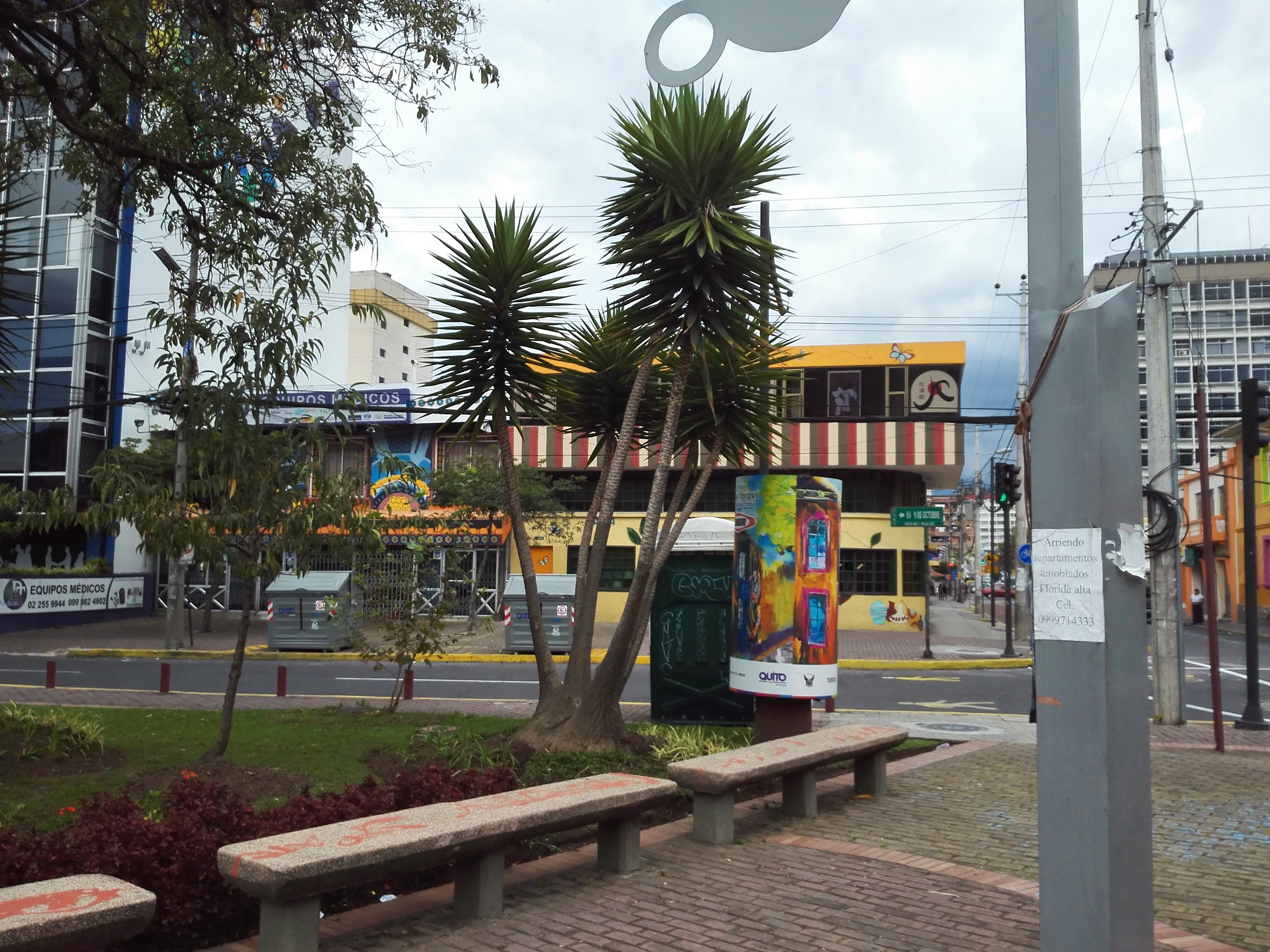
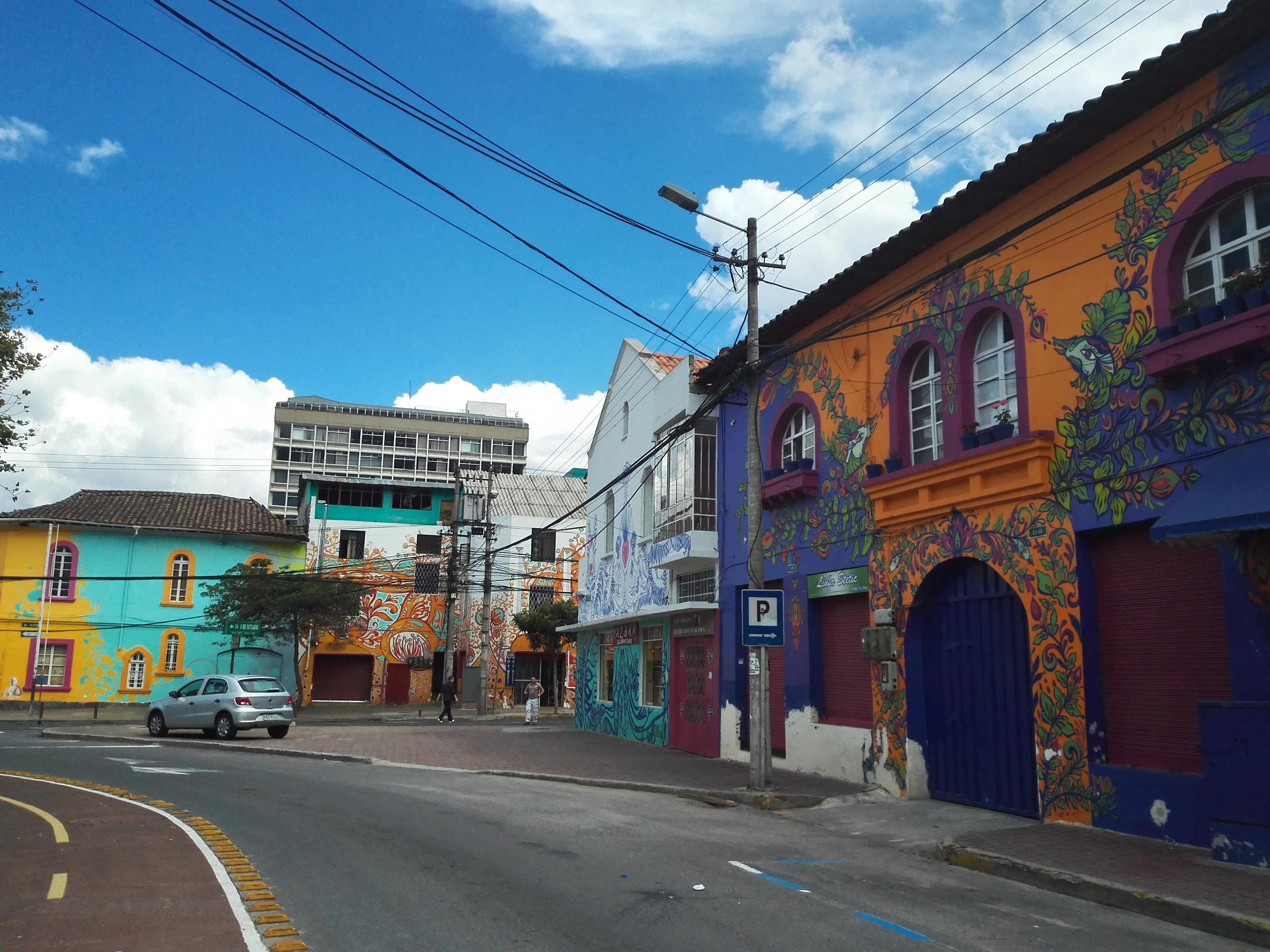
Now, Urban Design Lab is hosting neighbourhood meetings with different methodological approaches to participation, such as a “cartografía de percepciones”, encouraging neighbours to speak about their perceptions and needs in the neighbourhoods. The results will then be passed on to the local government. Although they are not likely to respond to all suggestions made by the organisation in cooperation with local residents, experience has shown that the initiative is appreciated and at least some changes could be expected.
Another initiative is called “Opus La Mariscal” and has been active in the neighbourhood for over a year, before all the Habitat III excitement started. Some active and concerned citizens got together, driven by the worry that crime in La Mariscal made up for 5% of Ecuador’s total crime some 10 years ago. By now, this has been reduced to less than 1%. Neighbours recognised the big potential of La Mariscal with its five universities in walking distance, touristic gems such as the plaza above, the high density of restaurants, bars and cafés etc. Opus describes itself as a “shared community project of self-governance that acts rather than talks”. Their greatest accomplishment so far is turning a run-down building occupied by delinquents into a local police station that is appreciated and accessible for the public. On its wall, there is the first public water fountain with great quality water in the neighbourhood and opposite there is a public library.
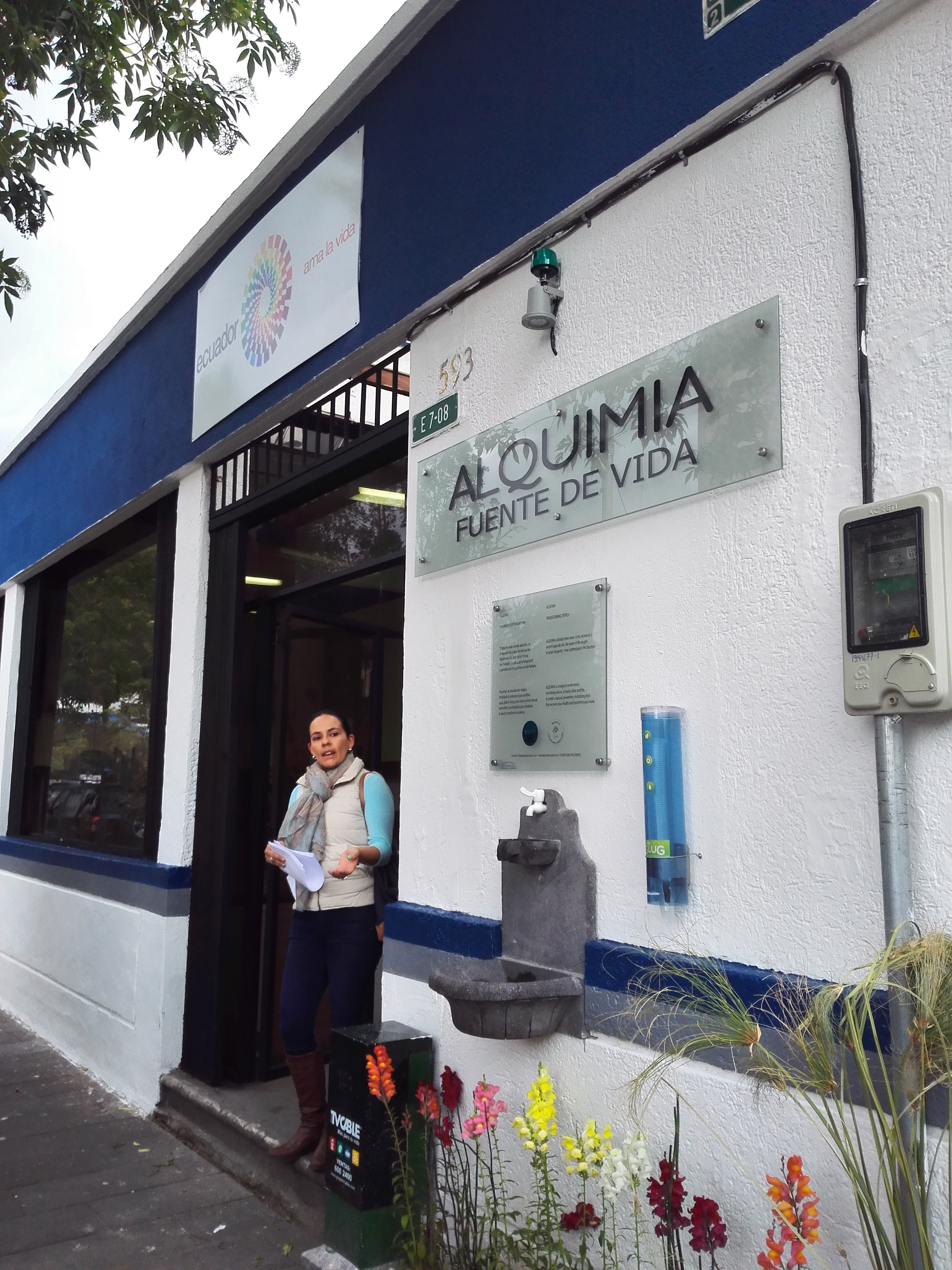
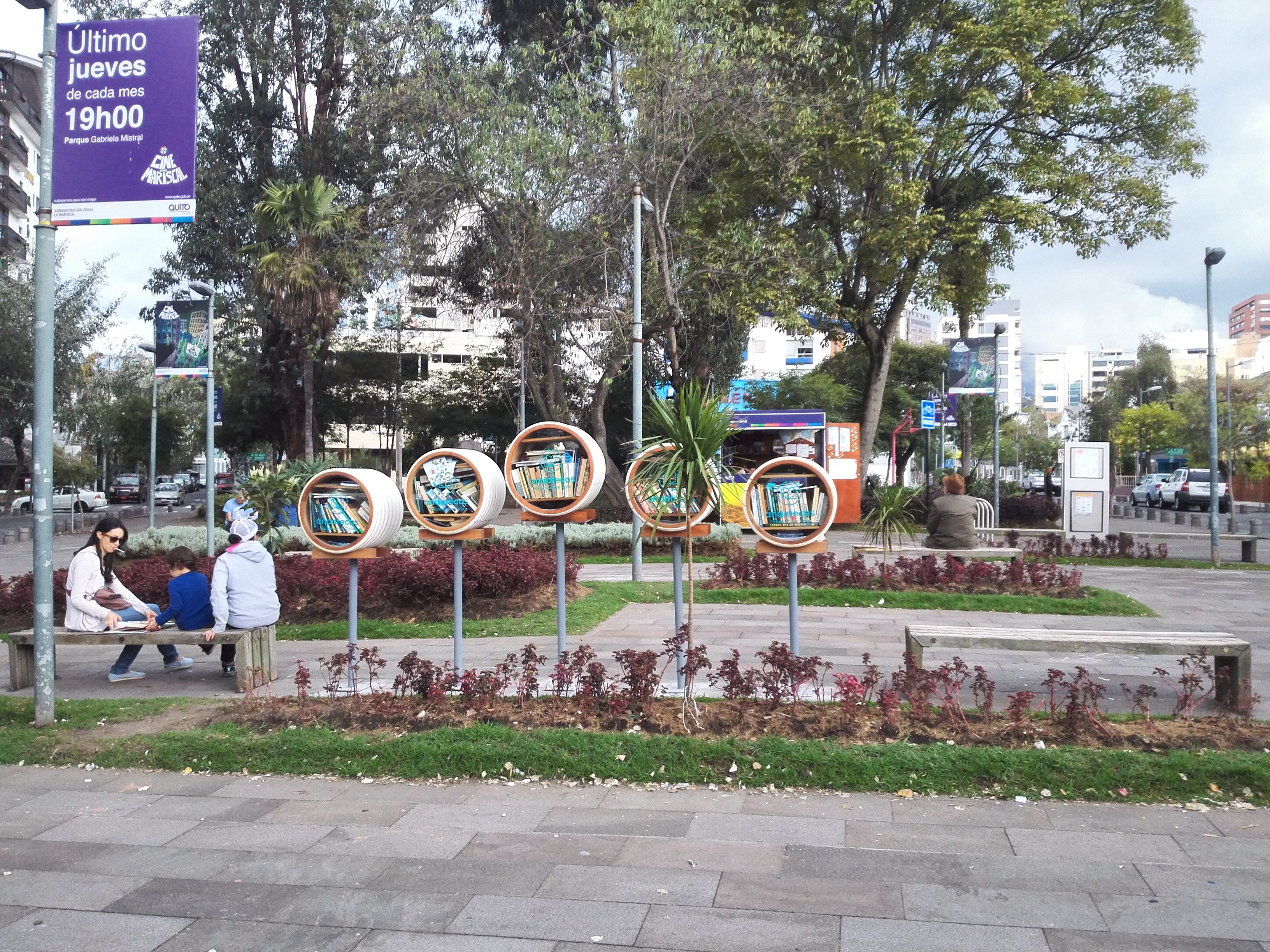
In addition, Opus planted more than 200 new trees just in the last month and started a community garden, advocating urban agriculture and sustainability. Other innovations include a GIS systems (Geociudadano) open for citizens and a voting app, using flash polls to settle issues in the neighbourhood (more information).
Finally, a community centre just opened a few days ago with a public art exhibition. It is expected to take off quickly.
The desire for more security and safety in La Mariscal is ubiquitous and apparently serves as a good starting point to mobilise neighbours into taking collective action. Peace and harmony are priorities for the residents. In the long term, a community government will be established in order to have more bargaining power with the municipal government.
So far, the municipal government (responsible for all of Quito’s roughly 3 million inhabitants) is spending an estimated 70% of the city’s budget on its current project, a new metro for the city. Throughout Quito, this doesn’t meet much approval – the Quiteños have other priorities. To make matters more adverse for neighbourhood upgrading, an Opus representative told me about their worries that the municipal government might see citizen activities such as theirs as competition and threat to their power. Other worries include a lack of financing for neighbourhood projects and the need to gather a critical mass of cititzens. But this only inspires Opus to work harder on reviving La Mariscal.
These are just two examples of many urban innovations happening in Quito. Of course, many of them are fuelled by Habitat III and the support by the United Nations, but some of them existed before and some of the new ones will exist for a long time after the Habitat III.
Learn more about Quito and Habitat III in these articles:

